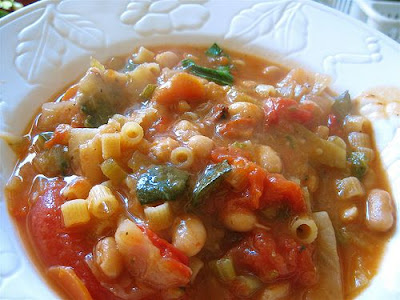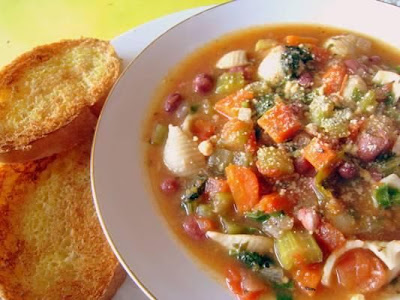 If za’atar is within reach, anyone can make delicious food at the drop of a hat. The possibilities are endless: Za’atar Olives, Za’atar and Labneh, Za’atar Tomato Sauce with Grilled Meat, Za’atar Bread, and Za’atar Pizza are only a few ways to use this versatile ingredient. I almost have my Za'atar Chicken recipe ready to post.
If za’atar is within reach, anyone can make delicious food at the drop of a hat. The possibilities are endless: Za’atar Olives, Za’atar and Labneh, Za’atar Tomato Sauce with Grilled Meat, Za’atar Bread, and Za’atar Pizza are only a few ways to use this versatile ingredient. I almost have my Za'atar Chicken recipe ready to post.
Za’atar is valued for more than great taste. “Who for forty days eats powdered dried leaves of za'tar fasting can be harmed by no serpent.” If the worst happens and you’re bitten by an asp or stung by a scorpion, za’atar cures “the bitings and the stings of venomous beasts." A Bethlehem proverb teaches, “Thyme and oil lead to the prosperity of the home.” Even more importantly, “eating za'atar improves your memory and makes you more intelligent.”
So what is za’atar?
A. An herb blend
B. Savory
C. Thyme
D. Oregano
E. Biblical hyssop
F. All of the above
The answer is “(F) All of the above.”
Za’atar (ZAHT-ar) is a class of herbs, and includes members of the thyme, oregano, and savory families. Za’atar is also a Middle Eastern herb blend, containing one or more of the za’atar herbs. As with many centuries-old dishes, za’atar blend has many regional and familial variations.
Disparity in za’atar’s spelling is pervasive; za’atar, za’tar, zatar, zahtar, satar, zahatar, and za’ater are all used. The spelling confusion is easy to explain. Za’atar is an Arabic word (الزعتر). Like Greek and other languages that don’t use the Roman alphabet, Arabic is inconsistently transliterated into English.
Some experts claim the herb za’atar is only one specific type of savory; others claim with equal vehemence it’s one specific type of oregano. Both may be right, but only for the region or family they’re writing about.
No matter its local or historical usage, “za’atar” has come to be a generic term used in the Middle East for a group of similarly-flavored members of the herb genus Lamiaceae. Za’atar herbs grow in the same habitat and have similar appearances. These practical factors may have led Middle Easterners to use one word for all the plants.
Linguistic confusion over “za’atar” is not unique to Arabic. In Turkish, the plant groups Origanum, Thymbra, Coridothymus, Satureja, and Thymus, generically called za’atar in Arabic, are all referred to as “kekik.”
Scientific analysis supports the pragmatic use of one word to refer to a plant group rather than a single plant. Gas chromatography and mass spectrometry show “the chemical profiles of the specific chemotypes of Satureja thymbra L. and Thymbra spicata L [a]re very similar. They are also very similar to those of the chemotypes of Coridothymus capitatus and Origanum syriacum.” [These four herb species are all called za’atar.]
Adding to the confusion, each za’atar herb is known by more than one name:
· Coridothymus capitatus aka Thymus capitatus aka Satureia/Satureja capitata (conehead thyme, headed savory, Persian hyssop, za’atar parsi, Spanish oregano)
· Origanum maru aka Origanum syriacum/cyriacum aka Marjorana syriaca (Biblical hyssop, Lebanese oregano, Syrian oregano, Egyptian marjoram)
· Satureja/Satureia thymbra (Roman za’atar, za’atar rumi, pink savory, barrel sweetener; in Greek, Θρούμπι, Τραγορίγανη)
· Thymbra spicata (spiked thyme, donkey hyssop, desert hyssop)
There are also several varieties of commercially available za’atar blends. For example, according to Paula Wolfert, “The taste of a za’atar mixture can be herbal, nutty, or toasty. …’Israeli’ is a pale green blend of pungent herbs that includes the biblical hyssop, along with toasted sesame seeds and sumac. The ‘Syrian’ blend, the color of sand, has a decidedly toasty flavor. The ‘Jordanian’ blend is dark green and very herbal, with some turmeric.” These aren’t the only za’atar blends; each spice merchant and family has a unique formula.
Before creating my own za’atar blend, I bought and tasted several commercially available varieties. I experimented with diverse combinations of herbs trying to best approximate the flavor of my favorite commercial brand. I also read as many English-language za’atar recipes as I could find.
For the herbal flavor in za'atar blend, many North American recipes use only dried domestic thyme, or a mixture of domestic thyme and domestic marjoram. These recipes, when tasted side by side with imported za’atar blends, tasted bland to me. I discovered that Greek oregano (preferably, but not necessarily, wild-harvested and sold on the stem) is key to creating flavorful za’atar in Alaska. Greek oregano’s spicy flavor, when tempered by combining it with dried wild or domestic thyme, approximates the flavor of authentic za’atar blend.
For anyone interested in growing their own, the various plants referred to as za’atar can be purchased from Well Sweep Herb Farm or Mountain Valley Growers. Although they’re tasty, keep in mind that most domestically grown herbs don’t have the flavor of their wild progenitors. There’s nothing like scarce water, poor soil, and hot sun for developing flavor.
For those who live where there are Middle Eastern markets or specialty stores, by all means buy ready-made, preferably imported, za’atar. You can also order za’atar blends online.
In Anchorage, you can buy sumac, a key ingredient in my za’atar blend, at Sagaya, City Market, and Summit Spice. Summit Spice sells its own Anchorage-made za’atar blend in tiny packets using marjoram, thyme, sumac, and sesame seeds. Summit also has a product labeled “Greek oregano,” which they tell me may be grown on farms in Greece or Turkey, depending on the shipment. 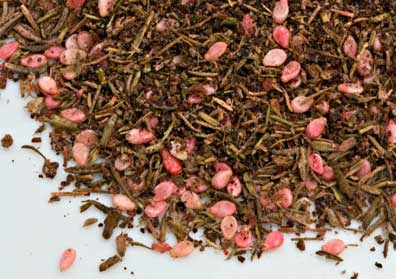 Za’atar Herb Blend
Za’atar Herb Blend
Because za’atar has so many uses, I make a lot at one time: 1/2 cup oregano, thyme, and sumac, 1/4 cup sesame seeds, and 1 Tbsp. salt. The sumac, which has a sour taste akin to lemon, is what gives za'atar its red color.
1 part dried Greek oregano, preferably wild-harvested
1 part dried thyme
1 part ground sumac
1/2 part white sesame seeds
Salt to taste
Grind the oregano and thyme in a spice grinder or blender, making sure it’s free of sticks and stems. Put the herbs in a glass jar with a tight sealing lid. Add the sumac, sesame seeds, and salt and shake well to thoroughly combine. Put on the lid and close it tightly. Store away from heat and light. Za’atar Olives
Za’atar Olives
Made entirely with pantry staples, Za’atar Olives are easy to prepare and make a great last-minute appetizer. Especially when warm, Za’atar Olives are an addictive treat.
2 cups Kalamata olives
1/2 cup olive oil
3 Tbsp. Za’atar Herb Blend (see recipe above)
Rinse the olives and dry them well. Put the olives and olive oil in a small saucepan, bring the olive oil to a simmer, and simmer the olives for 15 minutes. Stir in the Za’atar Herb Blend and simmer for 5 minutes. Serve warm or at room temperature. Za’atar Flatbread (Mana’eesh bi Za’atar)
Za’atar Flatbread (Mana’eesh bi Za’atar)
Makes 12 6” flatbreads
When I have breakfast with Marie, an Armenian friend who was born and raised in Beirut, she always serves Mana’eesh, olives, tomatoes, cucumbers, and cheese. Breakfast at Marie’s was my first introduction to za’atar; it's been a part of my repertoire. To make it from scratch, I use my Palestinian friend Salwa’s recipe for pita bread, and top it with Za’atar Herb Blend and olive oil. Although Marie serves this for breakfast, we eat it for a snack, for lunch, or as part of an appetizer spread. If you’re cooking for a small family, like I do, use half the dough for Mana’eesh and the second half for Za’atar pizza (see recipe below).
Dough:
2 1/2 cups lukewarm water
1 Tbsp. yeast (1 packet)
1 tsp. sugar
1 Tbsp. salt
6 – 7 cups all-purpose or bread flour
Topping:
1/2 cup olive oil
1/2 cup Za’atar Herb Blend (see recipe above)
Make the Dough: Place the water in a large bowl. Sprinkle the yeast over the water, sprinkle the sugar on top and let sit for 10 minutes, or until the yeast begins to foam. Mix in the salt and half the flour. Add the rest of the flour one cup at a time, just until the dough holds together. Knead the dough well (either by hand or in a standing mixer), adding flour as necessary until the dough is smooth and shiny. You may need more or less flour than called for in the recipe.
Put the kneaded dough in an oiled bowl to rise, cover the bowl with plastic wrap and a dish towel, and put it in a warm spot. Let the dough rise for 1 hour, or until it has doubled in size.
Preheat the oven to 500°F.
Divide the dough into 12 pieces and pat each piece into a 6” round flatbread. Place the flatbreads on baking sheets with rims; 6 dough rounds fit on a half-sheet pan. Use your fingers to dimple the tops of each flatbread. Let the flatbreads rest for 20 minutes.
Make the Topping: Mix together the olive oil and Za’atar Herb Blend.
Assemble and Bake the Flatbreads: Dimple the flatbreads one more time. Divide the topping between the flatbreads, about 1 Tbsp. each, and spread it evenly over the flatbreads’ tops. Bake the flatbreads, one baking sheet at a time, for 8-10 minutes, or until the flatbreads are golden. Serve immediately.
Note: Mana’eesh can be made ahead and rewarmed just before serving. To rewarm, stack the Mana’eesh, topping side to topping side, and wrap in aluminum foil. Put in a 300°F oven for 5-10 minutes, or until they are warmed through. Za’atar with Labneh (Yogurt Cheese)
Za’atar with Labneh (Yogurt Cheese)
Makes 3/4 cup
Plain Labneh goes really well with Za’atar Flatbreads. For garlic fans, mix 1-2 cloves puréed garlic into the cheese (an easy way to purée the garlic is with a standard Microplane rasp grater). Usually, I let the yogurt drain into the sink. If I’m feeling ambitious, I let it drain into a bowl and use the liquid to replace some of the water when I’m making bread dough.
2 cups plain yogurt, preferably whole milk
Pinch of salt
Za’atar Herb Blend (see recipe above)
Olive oil (optional)
Line a strainer with a paper towel. Mix a little salt into the yogurt and dump the salted yogurt into the paper-towel-lined strainer. Let the yogurt drain for 4 hours or overnight.
Spread the yogurt on a plate, sprinkle with Za’atar Herb Blend to taste, and drizzle with olive oil (if using). Serve with crackers, pita chips, or triangles of pita bread. Za’atar Pizza
Za’atar Pizza
Makes 12”-15” pizza
Extra Za’atar Tomato Sauce is a great way to dress up grilled chicken, lamb, or pork (see recipe below); it also may be frozen for future pizzas. The amount of Aleppo or red pepper depends on how spicy you like your food. Pick either Topping#1 or Topping #2 or, if you want to try them both, make the full amount of Za’atar Flatbread dough.
1/2 recipe Za’atar Flatbread dough (see recipe above)
Za’atar Onion Topping (Topping #1):
1/2 cup thinly sliced onions
1/4 cup chopped parsley
2 Tbsp. olive oil
2 Tbsp. Za’atar Herb Blend (see recipe above)
2 tsp. minced garlic
1/4 – 1/2 tsp. Aleppo pepper or 1/8 – 1/4 tsp. crushed red pepper (optional)
1/2 cup crumbled feta cheese
Za’atar Tomato Sauce (Topping #2) (makes enough sauce for 2 pizzas):
1 14.5 ounce can diced tomatoes, preferably fire-roasted
2 tsp. finely minced or puréed garlic
2 Tbsp. Za’atar Herb Blend (see recipe above)
1/2 – 1 tsp. Aleppo pepper or 1/4 – 1/2 crushed red pepper (optional)
1 Tbsp. olive oil
1/2 cup water or white wine
Salt
Freshly ground black pepper
1/2 cup thinly sliced onions
1/2 cup crumbled feta cheese
Shape the Pizzas: Shape the dough into a 12-15” round; the exact size depends on how thick you like your pizza crust. Place the dough on a pizza pan or baking sheet with rims. Use your fingers to dimple the top of the pizza, and let it rest for 20-30 minutes.
Preheat the oven to 500°F.
To Make Topping #1: Mix together all the topping ingredients except the crumbled feta.
To Assemble Pizza with Topping #1: Spread the topping mix over the pizza. Sprinkle the crumbled feta over the topping.
To Make Topping #2: In a saucepan, mix together the tomatoes, garlic, Za’atar Herb Blend, Aleppo pepper, olive oil, and water or wine. Bring to a boil, turn down the heat, and simmer for 15 – 20 minutes, or until the sauce is very thick. Taste and add salt or freshly ground black pepper, as needed.
To Assemble Pizza with Topping #2: Spread half the tomato sauce over the pizza to cover it (use more if you like saucy pizzas). Save any extra tomato sauce for another purpose. Evenly distribute the onions over the tomato sauce and sprinkle with crumbled feta.
Bake the Pizza: Turn the oven down to 450°F. Bake the pizza for 25-30 minutes or until the crust is nicely golden. Serve immediately. Grilled Pork Steak with Za’atar Tomato Sauce
Grilled Pork Steak with Za’atar Tomato Sauce
Serves 4
Za’atar Tomato Sauce goes equally well with grilled lamb or chicken. The sauce is identical to the one used for Za’atar Pizza (see recipe above). For the same reason that brining improves the flavor of pork chops, salting meats well in advance of grilling makes them taste much better. If you can only find large pork steaks, buy 2 and cut them in half.
Meat:
4 pork steaks
Salt
Freshly ground black pepper
Za’atar Tomato Sauce:
1 14.5 ounce can diced tomatoes, preferably fire-roasted
2 tsp. finely minced or puréed garlic
2 Tbsp. Za’atar Herb Blend (see recipe above)
1/2 – 1 tsp. Aleppo pepper or 1/4 – 1/2 crushed red pepper (optional)
1 Tbsp. olive oil
1/2 cup water or white wine
Salt
Freshly ground black pepper
Prepare the Meat: Rinse the steaks and dry well. Season both sides with salt and plenty of freshly ground black pepper. Let sit at room temperature while you make the sauce.
Make the Tomato Sauce: In a saucepan, mix together the tomatoes, garlic, Za’atar Herb Blend, Aleppo pepper, olive oil, and water or wine. Bring to a boil, turn down the heat, and simmer for 15 – 20 minutes or until the sauce is the thickness you prefer. Taste and add salt or freshly ground black pepper, as needed.
Cook the Meat: Grill the pork steak over a medium hot fire or in a grill pan on top of the stove. Turn the meat regularly until it is just done; be careful not to overcook it. Serve immediately with Za’atar Tomato Sauce spooned over.
~~~~~~~~~~~~~~~~~~~~~ This is my entry for Weekend Herb Blogging, which I am hosting this week at Mediterranean Cooking in Alaska.
This is my entry for Weekend Herb Blogging, which I am hosting this week at Mediterranean Cooking in Alaska.
Friday, February 27, 2009
All About Za'atar with Recipe for Za'atar Herb Blend and 5 Recipes for Using Za'atar
Posted by
Laurie Constantino
at
11:13 PM
17
comments
![]()
Labels: appetizers, bread, breakfast, feta, gluten free, ingredient, lenten, Middle Eastern, olives, oregano, pizza, pork, recipes, sauce, spice mix, thyme, vegan, vegetarian, Weekend Herb Blogging, yogurt
Saturday, February 21, 2009
Greek Cookbooks: Varoulko: Colors, Smells, and Tastes with Recipe for Sea Urchin Risotto (Ριζότο με Αχινό)
 The sun is setting over ice-rimmed Turnagain Arm, the inlet I see out my Anchorage window. The snow sparkles in the setting sun’s reflection.
The sun is setting over ice-rimmed Turnagain Arm, the inlet I see out my Anchorage window. The snow sparkles in the setting sun’s reflection.My body is here, but my mind is in Greece. I’m wading the shallows of a Northern Aegean island, a plastic basin of sea urchins floating beside me. It’s mid-February and the sea urchins are in their prime. Their tongues of “roe” are plump and full; their flavor captures the sea’s pure essence.
Four master chefs recently discussed what they wanted for their last meal on earth. For mine, I want a pile of just-harvested sea urchins, followed by a bowl of Lefteris Lazarou’s Sea Urchin Risotto, and then a few more fresh urchins.
Lazarou is the genius chef behind Varoulko, one of the best seafood restaurants in Athens. He flawlessly cooks sea creatures and, right when their flavors peak, sends them to his guests. One summer night we went to Varoulko and ate under the open sky in an Acropolis-view roof garden. This was our menu:
~~ Whole Wheat Toasts with Sea Urchin Roe
~~ Filo-Crusted Sardines with Silky Smooth Eggplant Sauce
~~ Grilled Calamari with Feta and Wine Sauce
~~ Angel Hair Pasta with Grouper Cheeks, Fresh Oregano, and Tomatoes
~~ Braided, Grilled Garfish Drizzled with Smoky Fava Sauce
~~ Filo Napoleon with Custard, Figs, and Rosemary & Yogurt Sorbet
Because Lazarou focuses on seafoods’ essential flavors, his dishes aren’t overly fussy. To accompany the superb food, Varoulko’s list includes many Greek wines that pair well with seafood.
Varoulko is extremely expensive and not a place for everyday eating. If I want reliably good, reasonably priced, high quality seafood in Athens, I head to fish tavernas; Logia tis Ploris and Trata o Stelios in Kaisariani are two of my favorites. Yet, for a special occasion, or just to be inspired by Lazarou’s skill, Varoulko is well worth a visit.
In 2006, Lazarou, working with Greek food writer Diane Kochilas, published his cookbook: Βαρούλκο Χρώματα, Αρώματα και Γέυσεις (Varoulko Colors, Smells and Tastes) (available only in Greek). This may be the most beautiful cookbook I’ve ever seen. It’s printed on high-quality paper that showcases Vassilis Stenos’ stunning food porn. Subtle background drawings of fish, akin to holographic watermarks, grace every page.
Lazarou’s recipes are straightforward and, like the food at Varoulko, emphasize flavor over showy technique. Best of all, his brilliant recipe for Sea Urchin Risotto, the one I want to eat as part of my last meal, is in the cookbook.
If you’re in Greece, head for the shore to gather sea urchins during the next few months. After eating your fill of raw urchins, including a few extra for me, gather enough to take home and make a batch of Lazarou’s Sea Urchin Risotto. )
Those who don’t live near wild urchins can make Sea Urchin Risotto with roe sold under the Japanese name “uni.” To find it where you live, locate a sushi bar that offers uni and ask for their source of supply.
 Sea Urchin Risotto (Ριζότο με Αχινό)
Sea Urchin Risotto (Ριζότο με Αχινό)Serves 4
Adapted from Βαρούλκο Χρώματα, Αρώματα και Γέυσεις (Varoulko Colors, Smells and Tastes) by Λευτέρης Λαζάρου με Νταϊάνα Κόχυλα (Lefteris Lazarou with Diane Kochilas)
Depending on the season, it can take awhile to clean sufficient sea urchins for risotto. The dish is absolutely delicious when made with 1/2 cup fresh sea urchin roe, as Lazarou specifies, and decadent if 3/4 cup roe is used, as I admit to having done. The easiest way to warm plates is to microwave them on high for 1 minute. Here are directions, with photographs, for opening sea urchins.
1 cup diced yellow onion, 1/8” dice
1/4 cup olive oil
Salt
Freshly crushed white peppercorns
1 cup Arborio rice
4 – 5 cups chicken stock
1/2 cup white wine
1/2 – 3/4 cup fresh sea urchin roe, carefully cleaned of all spines and grit, divided
Sauté the onions, lightly seasoned with salt and freshly crushed white peppercorns, in olive oil until they soften and start to turn golden. Stir in the rice to completely coat it with oil and cook, stirring, for 1 minute. Add the wine, and stir until it’s almost absorbed. Add 1/2 cup stock and cook over moderate heat, stirring constantly, until the stock is almost absorbed. Continue adding stock, 1/2 cup at a time, and stirring while its absorbed, until the risotto is the consistency you desire; it should be moist and creamy, not dry. It takes about 18 – 20 minutes for the rice to cook.
When the rice is just done, stir in 1/4 cup sea urchin roe, and divide the risotto between 4 warmed plates. Make a shallow hollow in the center of each portion, and fill it with the remaining sea urchin roe, evenly divided.
Serve immediately.
~~~~~~~~~~~~~~~~~~~~~~~~~~~~
 This is my entry for Bookmarked Recipes hosted and created by Ruth of Ruth’s Kitchen Experiments.
This is my entry for Bookmarked Recipes hosted and created by Ruth of Ruth’s Kitchen Experiments.
Posted by
Laurie Constantino
at
10:22 PM
25
comments
![]()
Labels: alaska, anchorage, gluten free, greece, greek, Greek cookbooks, lenten, recipes, rice, seafood, shellfish
Friday, February 20, 2009
Round-Up: Weekend Herb Blogging #172
 It was my turn to host Weekend Herb Blogging this week. We had an interesting group of entries as diverse as their creators' homelands. Many thanks to all who participated.
It was my turn to host Weekend Herb Blogging this week. We had an interesting group of entries as diverse as their creators' homelands. Many thanks to all who participated.~~~~~
JS and TS of [Eating Club] Vancouver
Vancouver, British Columbia, British Columbia
 Café Latte with Almond Milk
Café Latte with Almond Milk~~~~~
Chriesi of Almond Corner
Zurich, Switzerland
 Savoy Cabbage Stew
Savoy Cabbage Stew~~~~~
Ning of Heart and Hearth
Manila, Philippines
 Chrysanthemum Tea
Chrysanthemum Tea~~~~~
Christine of Kits Chow
Vancouver, British Columbia, Canada
 Four Lilies Soup
Four Lilies Soup~~~~~
Kalyn of Kalyn’s Kitchen
Salt Lake City, Utah, United States
 Middle Eastern Bean Salad with Parsley and Lemon (Balela)
Middle Eastern Bean Salad with Parsley and Lemon (Balela)~~~~~
Maria of Organically Cooked
Hania, Crete, Greece
 Greek Cabbage Rolls (Lahanodolmades)
Greek Cabbage Rolls (Lahanodolmades)~~~~~
Rachel of The Crispy Cook
Schuylerville, New York, United States
 Salad of Salted Seaweed Knots
Salad of Salted Seaweed Knots~~~~~
Laurie of Mediterranean Cooking in Alaska
Anchorage, Alaska, United States
 Za’atar Spice Blend and 5 Recipes for Using Za’atar
Za’atar Spice Blend and 5 Recipes for Using Za’atar~~~~~
 Roasted Butternut Squash and Guacamole Sandwich
Roasted Butternut Squash and Guacamole Sandwich
~~~~~
Cinzia of Cindystar
Bardolino, Lake Garda, Italy
 Salsa Verde (Italian Green Sauce)
Salsa Verde (Italian Green Sauce)
~~~~~
Haalo of Cook (Almost) Anything at Least Once
Melbourne, Australia

Sharmistha of Cook-a Doodle-do
Andhra Pradesh, India

~~~~~~~~~~~~~~~~~~~~~~~~~~~
Next week Weekend Herb Blogging will be hosted by Haalo of Cook (Almost) Anything at Least Once. Haalo is the coordinator of WHB, having generously taken over the responsibility from Kalyn of Kalyn’s Kitchen who created WHB. If you want to participate, please send your entries to whb AT cookalmostanything DOT com by 3pm Utah time, Sunday, March 8, 2009.
Posted by
Laurie Constantino
at
10:36 PM
18
comments
![]()
Labels: Weekend Herb Blogging
Weekend Herb Blogging #190 Round-Up
Family demands coincided with my computer’s system board burning out, leaving me woefully disconnected. I haven't been blogging, emailing, facebooking, or reading other people’s blogs. I miss my friends. I miss writing. I miss playing with pictures.
But little by little, I’m trying to reclaim my life. I’m back in Alaska, my computer seems to be fixed for the time being (knock on wood), and I’m cooking again. Now I just need to start blogging. I've started a piece about Alaska's versatile rockfish, and hope to complete it soon.
In the meantime, Haalo of Cook (Almost) Anything, the current major domo of Weekend Herb Blogging, wrote and asked if I’d host WHB this week. I immediately agreed, and hope hosting helps get my blogging mojo back. Weekend Herb Blogging, originally created by Kalyn of Kalyn’s Kitchen, is an international food blogging event open to anyone and devoted to exploring the creative use of herbs in cooking.
Here are this week’s interesting entries (please email me if I’ve made any errors or left anyone out):
Graziana of Erbe in Cucina (Cooking with Herbs)
Italy

*****
Anna of Morsels and Musings
Sydney, Australia

Peanut Butter Pie & Roasted Banana Ice Cream
In honor of her partner’s first visit to the mainland US, Anna made Maggie Beer’s peanut butter pie and paired it with David Lebovitz’s roasted banana ice cream. Anna says the pie was a “salty-bittersweet symphony” and the ice cream “has the most delectable flavor of sweet, caramelized banana.”
*****
Rachel of The Crispy Cook
Saratoga County, New York, United States

Stuffed Grape Leaves (Dolmades)
This year, when the wild grapevines on her property sprung forth, Rachel preserved her own grape leaves, and used them to make delicious stuffed grape leaves.
*****
Maybelle’s Mom of Feeding Maybelle
Ohio, United States

Strawberry Thyme Stuffed Cupcakes
Maybelle’s Mom says thyme “really works well with the chocolate and strawberries in these cupcakes. Very little is used so it is subtle but … it adds a wonderful element.”
*****
Joanne of Eats Well with Others
New York City, New York, United States

Rosemary-Grilled Tuna with Eggplant and Zucchini Relish
Joanne says her adaptation of Rachael Ray’s recipe “was delicious and went over really well with the parents.” The leftover relish paired so well with a melted cheese sandwich that Joanne may “remake the relish just for those purposes at a later date.”
*****
Katie of Eat This
Haslett, Michigan, United States

Swiss Chard Two Ways
Katie had an abundance of Swiss chard in her CSA box, so sautéed the leaves with onions and garlic and roasted the stems with butter and parmesan.
Tigerfish describes her unsuccessful attempt to grow fresh curry leaves, and shares her successful and simple recipe for Indian-spiced potatoes and mushrooms.
*****
Kalyn of Kalyn’s Kitchen
Salt Lake City, Utah, United States

Spicy Shrimp and Cucumber Salad with Mint, Lemon, and Cumin
Kalyn spiced up Ellie Krieger’s recipe for minty shrimp salad by adding cumin and Sriracha sauce, and recommends taking this delicious salad along for summer celebrations.
*****
Pam of Sidewalk Shoes
Soddy Daisy, Tennessee, United States

Garlic Scape Pesto
After her CSA box included garlic scapes three weeks in a row, Pam stocked her freezer with cubes of Dorie Greenspan’s Garlic Scape Pesto.
*****
Haalo of Cook (Almost) Anything
Australia

Turnip Gratin
Haalo says she’s not sure whether it was “the variety of turnips used or the way they [were] cooked but these … had a subtle taste of horseradish - combined with that creamy texture it had us dipping in for seconds!”
*****
Brii of Briiblog
Valsorda, Lake Garda, Italy

Strawberry Jam with Coffee
Brii loves to experiment with jams and marmalades and says the stranger they are the more they fascinate her. Her latest experiment is Strawberry Jam with Coffee, which she says is “perfect with creamy yogurt, vanilla ice cream, or a simple panna cotta.”
Cinzia of Cindystar
Lake Garda, Italy

Tarte Tatin with Saturnino Peaches
Saturnino peaches are known as "tabacchiere" (snuffbox) in Italian. Cinzia says they’re very special with soft, sweet flesh and an intense aroma. They’re originally from the Mount Etna area, and are excellent raw and in desserts like Cinzia’s delicious tart.
*****
Bong Mom of Bong Mom’s Cookbook
United States
Bati Charchari
Bong Mom says, “This is a simple vegetarian dish from the kitchens of West Bengal, a state on the eastern parts of India. The dominating flavor is of mustard oil. The vegetables I have used are potatoes, carrots and sugar snap peas. I have added sumac to give new dimensions to the flavor.”
~~~~~~~~~~~~~~~~~~~~~~~~~~~~~
Weekend Herb Blogging #191 - July 6th to July 12th – is hosted by Cheryl from Gluten Free Goodness. Please send your posts to cheryl AT eharrishome DOT comand include a photo sized to 300px wide.
Posted by
Laurie Constantino
at
10:21 PM
25
comments
![]()
Labels: Weekend Herb Blogging
Recipe for Lemony Carrot Ginger Soup (Σούπα με Καρότα, Λεμόνι και Τζίντζερ)
I’m sick and tired of my refrigerator being filled to the gunnels. Something must be done; the situation is dire.
Condiments and ingredients with a permanent spot in the refrigerator are a big cause of the problem. Preserved lemons, sourdough starter, 3 kinds of olives, 10 kinds of hot sauce, mayonnaise, mustard, pickles, Asian sauces, capers, anchovies, jam, milk, cream, orange juice, eggs, and who knows what else; it all adds up.
Cheese and salumi are always available at our house. And since I buy them at Costco, the single best source of cheese in Anchorage, they come in big packages and take up too much space. There are also the cheeses we bring back from Greece; we freeze what we can, but some can’t be frozen. They’re squatting on valuable real estate in the back of the refrigerator.
Produce completes the trifecta of refrigerator hogs. We eat a lot of vegetables and they take up space. Make that lots of space. When our Full Circle Farm CSA box arrives every other week, I struggle to cram in everything that needs to be refrigerated. I don’t always succeed.
Don’t get me started on the leftovers. They live perpetually on the verge of hurling themselves on anyone who is so bold as to open the refrigerator door. It’s quite a thrill when a yogurt container full of soup jumps out, drenching you and spreading its liquid goodness far and wide on the kitchen floor.
I can’t take it anymore. I’m done. I’ve reached my limit. I need a second refrigerator and I need it soon. I’m officially in the market for a used refrigerator. If you know of anyone in Anchorage who wants to get rid of one, or anyone who knows of anyone who knows of anyone, please let me know. In the meantime, I’m working my way through the produce.
Next up, three bunches of carrots; it’s soup time. Although I make a great Moroccan Carrot and Chermoula Soup, I decided on Carrot Ginger Soup, a recipe from the website of Beth, my partner this month in Taste and Create. Taste and Create is an event created by Nicole from For the Love of Food in which food writers are paired with a randomly assigned partner, and asked to cook and review one recipe from their partner’s blog.
Although I loved the concept of Beth’s recipe, it included orange juice, a flavor I don’t care for in savory dishes. Instead, I used lemon peel and juice. It was a fortuitous substitution; lemon’s tartness pleasingly balanced the sweet carrots and cinnamon. I added sautéed onions to bring out the soup’s savory notes, and crystallized ginger for its multi-dimensional sweet heat.
Sweet-yet-tangy Carrot Ginger Soup was a delicious treat on a snowy winter evening, even though it made only the tiniest dent in my refrigerator problem. We enjoyed the soup with Celery and Olive Salad, and were impressed by how much flavor we found in a simple dinner of carrots and celery. Lemony Carrot Ginger Soup (Σούπα με Καρότα, Λεμόνι και Τζίντζερ)
Lemony Carrot Ginger Soup (Σούπα με Καρότα, Λεμόνι και Τζίντζερ)
Serves 2 as a main course or 4 as a starter
The yogurt or cream stirred in at the end helps smooth out lemon’s sharp edges, but isn’t at all necessary. The soup tastes great without the dairy.
2 cups diced onions, 1/2” dice
2 Tbsp. olive oil
Salt
Freshly ground black pepper
1 pound carrots, peeled and roughly chopped
4 cups vegetable or chicken stock
1 Tbsp. finely grated lemon peel
2 Tbsp. minced crystallized ginger
1 tsp. ground cinnamon
1/4 cup fresh lemon juice
1/4 cup plain yogurt or cream (optional)
In a Dutch oven, sauté the onions, lightly seasoned with salt and freshly ground black pepper, in olive oil until they soften and begin to turn golden. Stir in the carrots and cook for 2 minutes. Stir in the stock, lemon peel, ginger, and cinnamon and bring to a boil. Turn down the heat and simmer, uncovered, for 40 minutes or until the carrots are soft.
Purée the soup with a stick blender (or in a blender or food processor) until it is very smooth. Return the soup to the pot, stir in the lemon juice, and cook for five minutes. Taste and add salt, freshly ground black pepper, or lemon juice, as needed. If using yogurt or cream, stir it into the soup. Serve immediately.
Posted by
Laurie Constantino
at
10:55 AM
15
comments
![]()
Labels: appetizers, blogs, carrots, csa, full circle farm, ginger, gluten free, leftovers, lemon, lenten, recipes, soup, yogurt
Thursday, February 19, 2009
Recipe for Salad of Bitter Greens with Sherry Truffle Vinaigrette (Σαλάτα για Τσικνοπέμπτη)
With 11 days to go, Greek Orthodox Easter Lent is fast approaching. For the devout, Lent is a time of spiritual cleansing, and includes fasting from meat and most animal products. Lent ends with the arrival of Easter, which this year is April 19. Today, however, thoughts of fasting are far, far away. Today is Tsiknopempti (Τσικνοπέμπτη, pronounced “tseek-no-PEMP-tee”), the day Greeks celebrate grilled meat in all its glory. The magnificent smell of meat on the grill wafts through the air of cities, towns, and villages across Greece, and gives the holiday its name: Burnt Meat Smell Thursday.
Today, however, thoughts of fasting are far, far away. Today is Tsiknopempti (Τσικνοπέμπτη, pronounced “tseek-no-PEMP-tee”), the day Greeks celebrate grilled meat in all its glory. The magnificent smell of meat on the grill wafts through the air of cities, towns, and villages across Greece, and gives the holiday its name: Burnt Meat Smell Thursday.
In Alaska, we’ll cook our grilled meat in the fireplace. To accompany it, I’m making a celebratory Salad of Bitter Greens with Sherry Truffle Vinaigrette.
The Vinaigrette is unusual, but it’s a surprisingly good partner for meat of all kinds. When mixed together, tart sherry vinegar and pungent white truffle oil form an entirely new flavor that tames greens’ bitterness and helps balance meat’s richness.
Happy Tsiknopempti! Salad of Bitter Greens with Sherry Truffle Vinaigrette
Salad of Bitter Greens with Sherry Truffle Vinaigrette
Serves 8
To preserve the greens’ crispness, dress the salad right before serving. Extra Sherry Truffle Vinaigrette keeps in the refrigerator about a week.
Vinaigrette:
1/4 cup sherry vinegar
1/3 cup extra virgin olive oil
1 Tbsp. white truffle oil
Salt
Freshly ground black pepper
Salad:
1 small head frisée (curly endive)
1 small head Chioggia radicchio (round-head radicchio)
1 bunch arugula
1 bunch green onions
1/2 cup fresh Italian parsley leaves
Make the Vinaigrette: Put all the ingredients in a jar with a tight fitting lid and close tightly. Vigorously shake the jar until the ingredients are thoroughly combined and emulsified. Taste and add salt or freshly ground black pepper, as needed. If the oil and vinegar separate, shake the Vinaigrette right before dressing the salad.
Make the Salad: Wash the greens and onions, remove any damaged parts, and spin dry. Slice green onions very thinly on the diagonal. Tear the frisée, radicchio, and arugula into bite sized pieces, and mix with the parsley leaves and green onion slices in a large salad bowl.
Just before serving, lightly sprinkle the greens with salt and freshly ground black pepper. Toss the salad with an appropriate amount of Sherry Truffle Vinaigrette (there will likely be dressing left over). Serve immediately.
~~~~~~~~~~~~~~~~~~~~~~
This is my entry for Weekend Herb Blogging, hosted this week by Susan from The Well-Seasoned Cook.
Posted by
Laurie Constantino
at
2:08 PM
17
comments
![]()
Labels: arugula, beef, gluten free, greece, greens, lenten, radicchio, recipes, salad, Weekend Herb Blogging
Beans: A History and My Legume Love Affair Ninth Helping Round-Up
 Beans: A History by Ken Albala (Berg 2007) may be the most interesting single-subject volume of food history I’ve seen; it reads as easily as a novel. Beans are Albala’s plucky hero, ever striving to overcome the cultural elite’s prejudice against what it deemed low-class trash food.
Beans: A History by Ken Albala (Berg 2007) may be the most interesting single-subject volume of food history I’ve seen; it reads as easily as a novel. Beans are Albala’s plucky hero, ever striving to overcome the cultural elite’s prejudice against what it deemed low-class trash food.From continent to continent, Albala tracks beans’ essential role in bringing civilization and saving the masses from starvation. Despite their importance to humanity, beans get little respect. They’re too often considered as exclusively poverty food, with personal success being achieved when beans are no longer part of one’s diet.
Albala’s cultural and political history of beans is particularly interesting to read during this time of economic downturn, when too many are relying on cheap fast food for sustenance. The stigma attached to bean eating that Albala describes may partially explain why this healthy eating option is not more readily embraced by modern Americans.
Albala says the only place where beans are universally held in high regard is on the Indian subcontinent. The entire region has a vibrant bean cuisine that is accepted without regard to class lines.
That vibrancy nearly overwhelmed me as I assumed responsibility for hosting My Legume Love Affair Ninth Helping (MLLA9) this month.
The initial wave of MLLA9 recipes came mostly from Indian cooks, a cuisine with which I am totally unfamiliar. I struggled to understand the recipes, with their incomprehensible-to-me names and ingredients. Wikipedia became my new best friend.
I quickly discovered that when Indian cooks use the word “lentil,” they may be referring to what I call lentils, or they may mean chickpeas, pigeon peas, or various members of the Vigna family. Some Indian cooks use the word “gram” or “dal” instead of lentil for any of these legumes. Scientific names were my only hope for understanding the very interesting Indian recipes.
By sheer coincidence, I was reading Albala’s book. It helped clear up some of my confusion. Albala gave me a clear structure for understanding the relationships between all the new legumes to which I was being introduced.
In putting together this month’s round-up, on the assumption that some of my readers may be as confused as I was by Indian terminology, I adopted Albala’s organizational structure. To locate the beans in historical time and place, I’ve included brief quotations from Albala’s book.
For anyone interested in learning more about legumes, I highly recommend Beans: A History; it’s well worth reading.
Each month, Susan of The Well-Seasoned Cook, the creative mind behind My Legume Love Affair, offers a prize which is randomly awarded to one entrant. The prize this month was Mediterranean Street Food by Anissa Helou, and the winner is Petra of Foodfreak. Congratulations Petra!
Since this month I’m focusing on species, I’m awarding a second prize for the entry using the most legume species in a single recipe. The prize is A Taste of Thyme: Culinary Cultures of the Middle East by Richard Tapper and Sami Zubaida, and the winner is Maria of Organically Cooked for her Mixed Bean Stew. Congratulations Maria!
With over 80 entries, this month’s round-up is a long read. Grab a cup of tea and settle in to learn about an enjoyable and highly diverse group of legumes and recipes!
~~~~~~~~~~~~~~~~~~~~~
Lentils: Fertile Crescent
The histories of humans and lentils are inextricably intertwined. In Beans: A History, Albala reports at page 9-11: “The lentil was among the very first plants ever domesticated … Somewhere in the Fertile Crescent, what is today eastern Turkey, northern Iraq and Syria, some unsuspecting nomad decided to gather tiny wild lentils and plant them … The earliest charred remains of wild lentils, an indication of cooking, date from about 11000 BCE and are found at the Franchthi Cave in Greece. Somewhere around 7000 BCE or earlier the lentil began to be domesticated, the modern species of Lens culinaris most likely deriving from a wild progenitor Lens orientalis.”
1. Petra of Foodfreak
Hamburg, Germany

Braised Lentils, Peas, and Bacon with Zander Fish
(Lentils – Lens culinaris and Green Peas – Pisum sativum)
California, United States

Soup with Lentils from Castelluccio
(Lentils – Lens culinaris)
Sydney, New South Wales, Australia

Warm Lamb Salad with Beets and Lentils
(Lentils – Lens culinaris)
Kolkata, India

Shrimp and Red Lentil Fritters
(Red Lentils – Lens culinaris)
Singapore
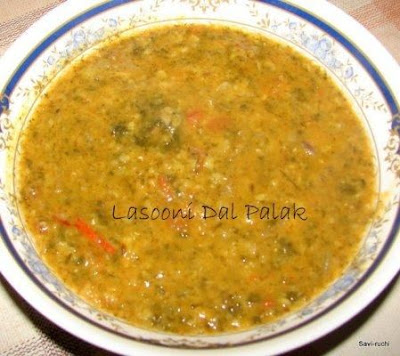
Curry with Lentils, Spinach, and Garlic (Lasooni Dal Palak)
(Red Lentils – Lens culinaris and Toor Dal - split pigeon peas - Cajanus cajan)
Lupines: Europe and Andes
Lupines have a dicey history as food. They need to be carefully prepared to remove bitter alkaloids that render lupines both poisonous and unpalatable. However, Albala suggest lupines may be worth the effort to prepare. They are remarkable high in protein, which is provided at a much higher efficiency rate than beef.
“Unlike other beans, there are native species of lupines on both sides of the Atlantic. Lupinus albus and luteus … as well as augustifolius … come from southern Europe and Lupinus mutabilis comes from the Andes and is uniquely adapted to growing at high altitudes.” Albala at 26. Although Andean lupines are still used in heart of Inca country, “[l]upines were completely effaced from the culinary record in the West. That is not to say ordinary people avoided them. They continued to be eaten commonly as a snack, especially at popular fairs in Italy … Lupines or lupini beans can be found in jars on the shelves of Italian grocery stores in the US and in Provencal olive mixes.” Albala at 30.
 I’d planned on writing about lupini beans and bought them both dried and bottled. We tried the already-prepared bottled version first. They were inedibly salty and extremely bitter. No one who ate one was willing to try a second. I soaked them overnight and removed the excessive salt, but the nasty bitterness remained. By unanimous demand, the bottled beans were discarded.
I’d planned on writing about lupini beans and bought them both dried and bottled. We tried the already-prepared bottled version first. They were inedibly salty and extremely bitter. No one who ate one was willing to try a second. I soaked them overnight and removed the excessive salt, but the nasty bitterness remained. By unanimous demand, the bottled beans were discarded.After that, I lost my enthusiasm for the multi-day soaking process necessary to render dried lupini beans edible. Since I have the dried beans, and Mark Bittman claims they’re good, I’ll try them someday; just not this month.
Fava Beans: Europe
Though not much used in the United States, fava beans are wildly popular in Europe and the Eastern Mediterranean basin. Albala tells us at 33-34 that fava beans were “among the early Fertile Crescent domesticates,” but “the origin of Vicia faba is unknown and its wild ancestor is probably extinct. … The oldest archaeological remains of favas were found in a site near Nazareth dated between 6500 and 6000 BCE … Oddly, the archaeological record is otherwise silent and the next findings date from several thousand years later. Exactly when and where favas were domesticated remains a complete mystery, and they quite suddenly appear in Bronze Age sites in the third millennium BCE in places as far flung as Spain and Portugal, northern Italy and Switzerland, Greece and the Middle East. … most likely they spread from the Fertile Crescent in every direction, becoming the premier bean of the ancient world. When the word bean is used in European texts prior to 1492, it is almost always the fava.”
1. Maria of Organically Cooked
Hania, Crete, Greece

Mixed Bean Stew (Pallikaria-Παλλικάρια)
(Fava Beans – Vicia faba, Lentils – Lens culinaris, Chickpeas - Cicer arietinum, Black-eyed Peas - Vigna unguiculata subsp. unguiculata, White Beans - Phaseolus vulgaris)
India

Fresh Fava Bean and Eggplant Curry
(Fava Beans – Vicia faba)
Peas, Chickpeas and Pigeon Peas
Peas’ sweet flavor has made it more popular than most legumes. Peas also “have the broadest range geographically and climactically than any other legume … from the subtropics to cold and arid climates.” Albala at 75-6. According to Albala at 76, peas were “one of the earliest domesticated plants … archaeological remains of which date back as far as 8000 BCE. Its wild progenitor was probably the tall humile type distributed throughout the Levant, eastern Turkey, Syria and northern Iraq. … [A]ll the cultivated varieties used today are Pisum sativum. This domesticated pea spread rapidly, reaching Western Europe by 4000 BCE and thereafter south to Egypt, north into the Caucasus and Eastern Europe and east eventually reaching India by about 2000 BCE.”
1. Matt of Hurst Bean Blog
Indianapolis, Indiana, United States

Split Pea and Asparagus Soup
(Green Peas – Pisum sativum)
2. Laurie of Mediterranean Cooking in Alaska
Anchorage, Alaska, United States
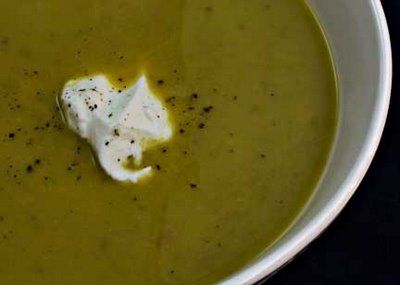
Split Pea Soup with Ham Hocks
(Green Peas – Pisum sativum)
3. Ragee of Simply Innocence
Copell, Texas, United States
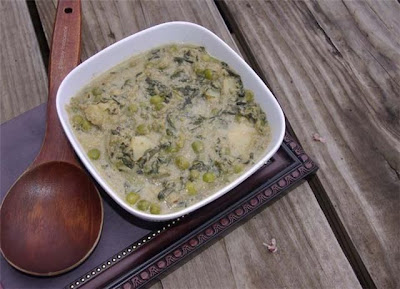
Sweet Green Peas and Fresh Fenugreek Leaves in Spicy Cream Sauce (Methi Matar Malai)
(Green Peas – Pisum sativum)
Albala points out at 81-2 that like peas, chickpeas have “largely escaped the ignominy of beans. Though … they are hardly a pea at all. They are properly a bean. … The origin of chickpeas is once again in the Fertile Crescent … in Turkey and Syria the oldest carbonized chickpeas have been found, about 10,000 years old, but these are small and may have been gathered wild. Larger seeded, domesticated samples are found in Bronze Age sites in Israel and Jordan. They made their way to Greece by 6000 BCE and France a few thousand years later, and, like the other beans, eventually to Africa and India. … There are two distinct types of chickpea – the large smooth-skinned variety common in the Mediterranean called Kabuli and smaller darker chickpeas more common in India and thereabouts called Desi.”
1. Vani of Mysoorean
United States

Mexican Bean and Vegetable Burger
(Chickpeas - Cicer arietinum)
3. Nuria of Spanish Recipes
Barcelona, Spain
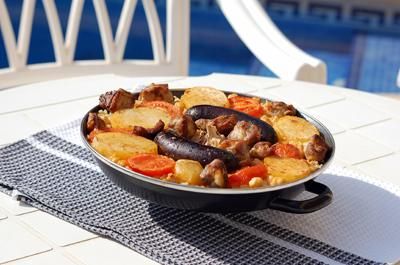
Oven-Baked Rice with Chickpeas, Pork, and Morcilla (Arroz al Horno)
(Chickpeas - Cicer arietinum)
4. Sree of Taste Spell
United States
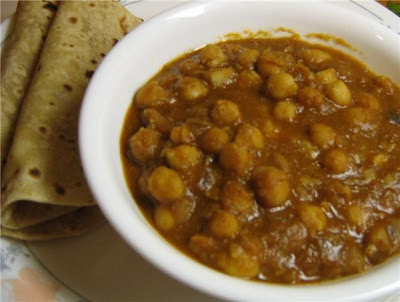
Chickpeas in Spicy Curry Sauce (Chole Masala)
(Chickpeas - Cicer arietinum)
5. Divya of Easy Cooking
Channai, India

Curried Garbanzo Beans with Fresh Fenugreek Greens (Methi Chole)
(Chickpeas - Cicer arietinum)
6. Maya of Stories from Emona
Ljubljana, Slovenia

Tomato and Onion Sautéed Chickpeas with Scrambled Eggs and Rosemary Roasted Potatoes
(Chickpeas - Cicer arietinum)
7. Varsha of Will-O’-the-Wisp
Seattle, Washington, United States
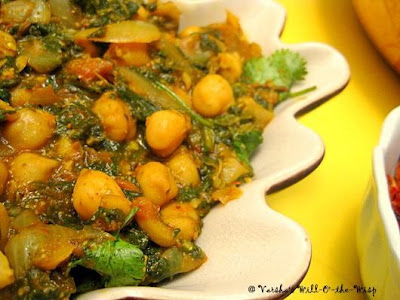
Garbanzo Bean and Spinach Curry (Palak Chole)
(Chickpeas - Cicer arietinum)
8. Asha of Foodie’s Hope
North Carolina, United States

Brown Chickpea Masala (Chana Masala)
(Desi Chickpeas - Cicer arietinum)
9. Hema of Salt to Taste
Bayonne, New Jersey, United States

Spicy Chickpeas Fritters (Masala Vadai)
(Chana Dal – split skinless Desi chickpeas - Cicer arietinum)
10. Sanghi of Sanghi’s Food Delights
Singapore

Sweet Steamed Dumplings (Kolukattai)
(Chana Dal – split skinless Desi chickpeas - Cicer arietinum)
11. Sanghi of Sanghi’s Food Delights
Singapore
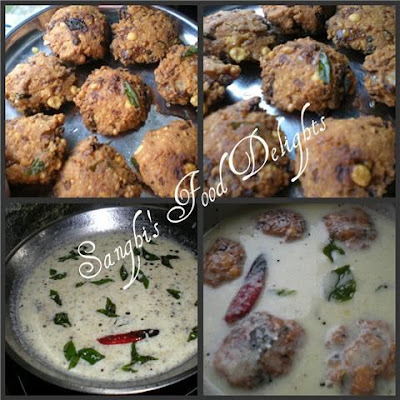
Spicy Chickpeas Fritters with Buttermilk Curry (Masala Vadai Mor Kuzhambu)
(Chana Dal – split skinless Desi chickpeas - Cicer arietinum)
12. Indrani of Appyayan
Singapore

Fry Bread Stuffed with Spicy Chickpeas (Radhaballavi-Dal Puri)
(Chana Dal – split skinless Desi chickpeas - Cicer arietinum)
13. Sonal of Khaane Ke Shaukeen
Singapore

Fry Bread with Chickpea Flour Stuffing (Besan Kachori)
(Chana Dal Flour - Desi chickpeas - Cicer arietinum)
14. Rinku of Cooking in Westchester
Westchester County, New York, United States

Radish and Scallion Pakoras with Chickpea Batter
(Chana Dal Flour - Desi chickpeas - Cicer arietinum)
For Americans, Pigeon Peas are the least well-known of the “peas” catalogued by Albala. Cajanus cajan is also known as the Congo or gunga pea and, in the Caribbean, as gandules. Albala says at 86, “They probably originated in India, where they are split, thereafter called toor dal, and cooked down with spices until they disintegrate. … To this day the majority are grown in India. From there they spread basically to every dry tropical region where peas do not grow well. Thus in East Africa they found a welcome home, though some speculate that they originated [t]here.”
1. Varsha of Will-O’-the-Wisp
Seattle, Washington, United States
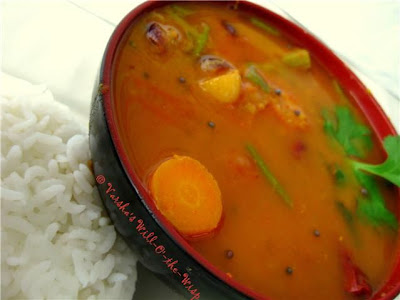
Spicy Vegetable and Pigeon Pea Soup (Sambar)
(Toor Dal – split pigeon peas - Cajanus cajan)
2. Lubna of Yummy Food
Bangalore, India

Spicy Vegetable Soup (Sambar) with Shallots
(Toor Dal – split pigeon peas - Cajanus cajan)
3. Lubna of Yummy Food
Bangalore, India

Cucumber and Pigeon Pea Soup (Dosakaya Pappu)
(Toor Dal – split pigeon peas - Cajanus cajan)
4. Saritha of My Kitchen’s Aroma
Sharjah, United Arab Emirates
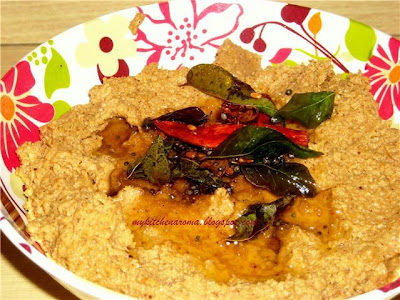
Coconut and Pigeon Pea Chutney (Kandi Pappu-Cobari Pachadi)
(Toor Dal – split pigeon peas - Cajanus cajan)
5. A&N of Delectably Yours
Atlanta, Georgia, United States

Lemon Pigeon Pea Soup (Rasam)
(Toor Dal – split pigeon peas - Cajanus cajan)
6. Usha of Veg Inspirations
North Carolina, United States
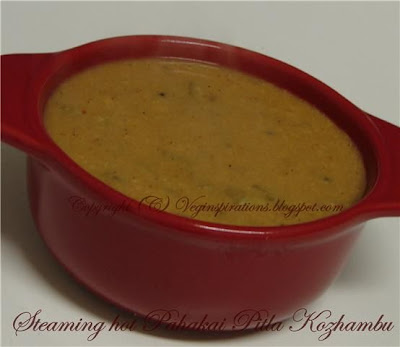
Bitter Gourd with Pigeon Pea-Tamarind Sauce (Pahakai Pitlai Kozhumbu)
(Toor Dal – split pigeon peas - Cajanus cajan, Chana Dal – split skinless Desi chickpeas - Cicer arietinum, and Urad Dal – split black gram – Vigna mungo)
7. Priyanka of Not Yet 100
India
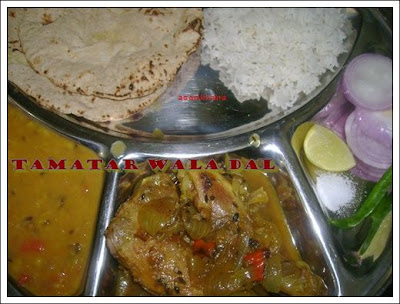
Pigeon Peas and Tomatoes (Tamatar Dal)
(Toor Dal – split pigeon peas - Cajanus cajan)
8. Priya of Priya’s Easy N Tasty Recipes
Paris, France
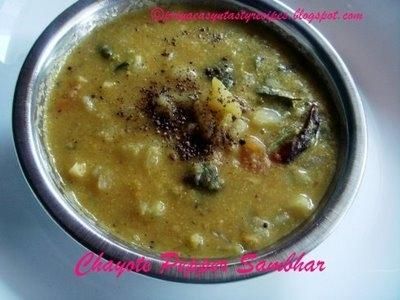
Peppery Chayote and Pigeon Pea Stew (Chayote Pepper Sambhar)
(Toor Dal – split pigeon peas - Cajanus cajan)
9. Chitra of Ratatouille-Anyone Can Cook
Bangalore, Karnataka, India

Crispy Bean-Rice Pancakes with Curry Leaf Chutney (Moru Moru Adai)
(Toor Dal – split pigeon peas - Cajanus cajan and Chana Dal – split skinless Desi chickpeas - Cicer arietinum)
10. Le of Heartful Concoctions
United States

Spicy Pigeon Pea, Eggplant, Drumstick, and Green Mango Soup
(Toor Dal – split pigeon peas - Cajanus cajan)
Oddballs and Villains
“Every family has its black sheep oddballs and criminal types. Beans are no different. They seem odd only by comparison to the respectable members of the Fabaceae family, and many have found very happy homes throughout the world. Some of these are real degenerates though, surviving on the very margins of the human food supply, mostly as famine foods. … Although in no way related to each other, these beans [are included in a single chapter] because few readers are likely to be acquainted with them. This rogues’ gallery will include Lathyrus and Lablab, the Vetch clan, as well as the more obscure Canavalia, Mucuna and Macrotyloma, and the beautifully seductive Psophocarpus tetragonolobus…” Albala at 90.
1. Laurie of Mediterranean Cooking in Alaska
Anchorage, Alaska
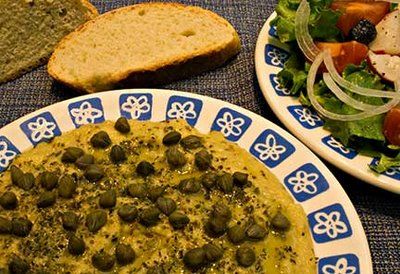
Santorini Fava with Capers (Fava Pantremeni-Φάβα Παντρεμένη)
(Santorini Fava, Lathyrus clymenum L.)
2. Divya of Dil Se
Los Angeles, California, United States
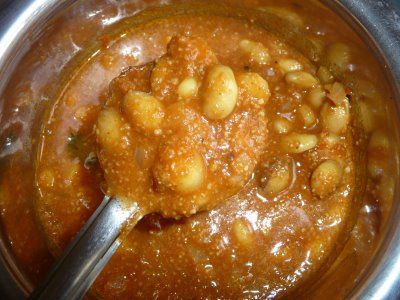
Hyacinth Bean Stew (Mochai Kuzhambu)
(Hyacinth Beans – Lablab purpureus)
Mung and the Vignas: India
In India, beans escaped the low-class reputation in which they were held elsewhere in the world. Albala at 107-08 attributes this to a variety of political and religious reasons which “catalyzed the valorization of beans in a way that was diametrically opposed to Western Civilization’s denigration. Beans thus became an essential staple crop in India, the primary source of protein for the majority of people… Although the majority of modern Indians are not vegetarian, dense population and the high price of meat has meant the majority still receive most of their calories from vegetables, primarily grains and beans. As we have seen, Fertile Crescent legumes such as lentils and chickpeas were introduced at a very early date. But the subcontinent also had its own species, the most important of which are the Asiatic Vigna species or as they are known in India ‘grams’: mung beans (V. radiata or green gram), urd beans (V. mungo or black gram) as well as moth beans (V. aconitifolia), and rice beans (V. umbellata). … The Taxonomic distinction of the Vigna beans is also a relatively recent phenomenon. Many were classed as Phaseolus until that name was reserved exclusively for New World species…These Asian Vigna species were also given a sub-genus classification called Ceratotropis.”
1. Deeba of Passionate About Baking
North India

Mung Bean Pancakes
(Moong Dal – split mung beans – Vigna radiata)
2. Sanghi of Sanghi’s Food Delights
Singapore

Sweet Mung Bean Pudding (Kheer)
(Moong Dal – split mung beans – Vigna radiata)
3. Saritha of My Kitchen’s Aroma
Sharjah, United Arab Emirates
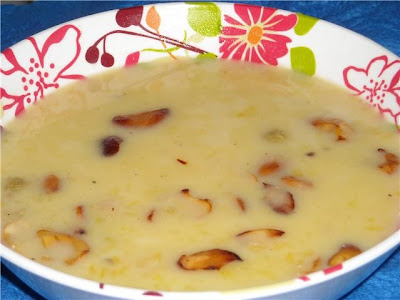
Sweet Mung Bean Pudding (Payasam or Kheer)
(Moong Dal – split mung beans – Vigna radiata)
4. Aparna of Ap’s Kitchen
Mangalore, Saudi Arabia
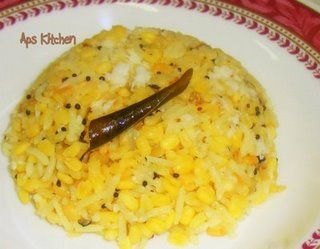
Spiced Mung Beans and Rice (Sheeth ani Mooga Dali Bette)
(Moong Dal – split mung beans – Vigna radiata)
5. Priya of Priya’s Easy N Tasty Recipes
Paris, France

Mung Bean Fritters (Green Gram Medhu Vada)
(Mung Beans – Vigna radiata)
6. Priya of Priya’s Easy N Tasty Recipes
Paris, France

Spinach and Mung Bean Soup
(Mung Beans – Vigna radiata)
7. Kalva of Curry in Kadai
Florida, United States

Steamed Rice-Bean Cakes with Garlic-Spice Powder (Kanchee Idli and Vellulli Karam)
(Urad Dal – split black gram – Vigna mungo)
8. Ashwini of Nanna Adige
Dallas, Texas, United States
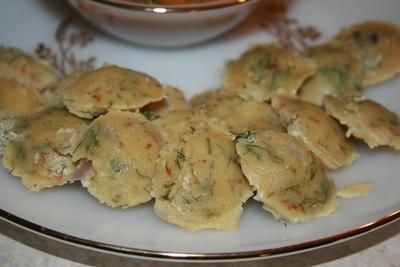
Steamed Bean Cakes (Dal Idli)
(Urad Dal – split black gram - Vigna mungo, Moong Dal – split mung beans - Vigna radiata, and Toor Dal - split pigeon peas - Cajanus cajan)
9. Sonal of Khaane Ke Shaukeen
Singapore

Bean Dumplings in Yogurt (Dahi Vada)
(Urad Dal – split black gram - Vigna mungo and Moong Dal – split mung beans - Vigna radiata)
10. Priyanka of Not Yet 100
India

Crisp Flatbread with Black Gram Stuffing (Urad Dal Parathas)
(Urad Dal – split black gram - Vigna mungo)
11. Lavanya of vividharuchulu
Redmond, Washington, United States

Rice-Bean Pancakes (Plain Dosa)
(Urad Dal – split black gram - Vigna mungo)
12. Sharmistha of Cook-a-Doodle-Do
Hyderabad, India

Indian Bread with Bean-Asafoetida Stuffing (Hing er Kochuri)
(Urad Dal – split black gram - Vigna mungo and Chana Dal – split skinless Desi chickpeas - Cicer arietinum)
13. Priya of Food and Laughter
India

Spicy “Gunpowder” Seasoning (Molaha Pudi)
(Urad Dal – split black gram - Vigna mungo and Chana Dal – split skinless Desi chickpeas - Cicer arietinum)
Albala concludes his Vigna chapter with the Adzuki bean at 113: “Although clearly thematically separate from the discussion in this chapter, there remains one more relative in the Ceratotropis sub-genus. He is much bigger than his brothers, and more boisterous, with his bright red coat. He is also a little sweeter and something about the adzuki bean (V. angularis) makes you feel like celebrating.”
1. Apu of Annarasa
United States

Adzuki Beans with Swiss Chard
(Adzuki Beans - Vigna angularis)
2. Lucy of Nourish Me
Melbourne, Australia
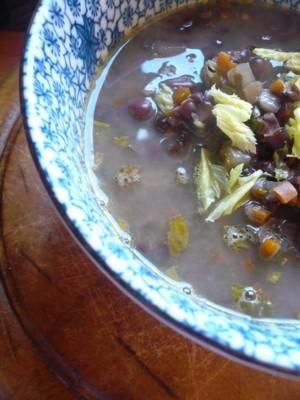
Aduki and Celery Leaf Soup
(Adzuki Beans - Vigna angularis)
Black-eyed Peas: Africa, Soul Food
“Vigna unguiculata, at least according to botanists, is a cousin to the Asian Vigna species. … The black-eyed pea is, in any case, a resolutely and characteristically African bean. Archeological evidence from the Chad basin suggests that the pastoral people who migrated into this area around 1800 BCE began to switch to an agricultural regime by about 1200 BCE … with the staples of pearl millet and black-eyed peas. This bean has thus always played a central role in African agriculture and was brought with slaves to the Americas where it remains an indelible marker of African-American identity. … In the Old World, black-eyed peas spread northward and eastward in ancient times and the earliest recorded evidence of their use is not in Africa but among the Greeks and in India. … Africa, however, is the real home of black-eyed peas and West Africa still produces roughly 90 percent of the world supply.” Albala 117-19.
1. Pavani of Cook’s Hideout
New Jersey, United States

Black-Eyed Pea Burgers
(Black-eyed Peas - Vigna unguiculata subsp. unguiculata)
2. Keerthana of Kitchen Vibes
Germany

Curried Black-Eyed Peas (Lobhia Curry)
(Black-eyed Peas - Vigna unguiculata subsp. unguiculata)
3. Sia of Monsoon Spice
United Kingdom
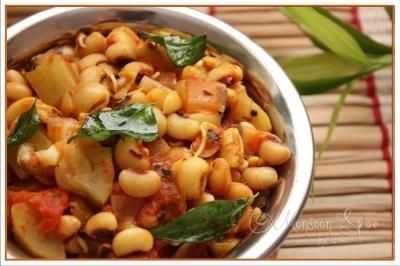
Curried Black-Eyed Pea Sprouts with Bottle Gourd (Lauki-Lobia Curry)
(Black-eyed Peas - Vigna unguiculata subsp. unguiculata)
4. Rachel of The Crispy Cook
Saratoga County, New York, United States
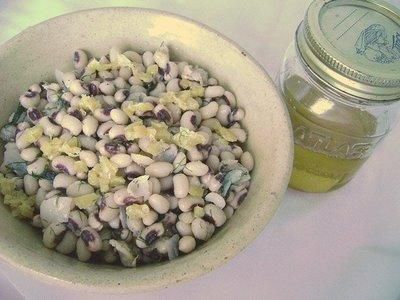
Black-Eyed Pea Salad with Preserved Lemons
(Black-eyed Peas - Vigna unguiculata subsp. unguiculata)
Phaseolus vulgaris: Mexico and the World
The common bean, Phaseolus vulgaris, wasn’t known outside the Americas until after 1492. It is now grown throughout the world, and comes in a myriad of wildly different shapes and sizes. Albala describes its origins at 127-28: “The wild ancestor of Phaseolus spread from Northern Mexico to Argentina and it was domesticated independently both in the Peruvian Andes...as well as in Mexico… Exactly when these events took place is more difficult to determine, partly because archeological remains are sparse in the humid environment of Mesoamerica… Remains of P. vulgaris from a cave in the Peruvian Andes have been radiocarbon dated at about 6000 BCE and they may have been domesticated well before that … it is safest to say that these beans were domesticated several thousand years ago, without indicating a precise chronology.” Albala goes on to describe in fascinating detail the dramatic changes for both P. vulgaris and humans that occurred after Columbus encountered the New World. As P. vulgaris was incorporated into cultures across the world, the numerous bean varieties with which we are now familiar evolved and came into common use.
1. Katerina of Culinary Flavors
Athens, Greece
Bean Salad
(White Beans - Phaseolus vulgaris)
3. Valli of More Than Burnt Toast
British Columbia, Canada

Better for You Taco Salad
(Red Kidney Beans - Phaseolus vulgaris)
5. Laura of The Spiced Life
Midwest, United States

Kidney Beans with Cardamom-Yogurt Sauce
(Red Kidney Beans - Phaseolus vulgaris)
6. Neha of Tasty Recipes
Singapore

Red Kidney Bean (Rajma) Curry
(Red Kidney Beans - Phaseolus vulgaris)
7. Renuka of Fusion
Tamilnadu, India

Curried Red Kidney Beans (Rajma Gravy)
(Red Kidney Beans - Phaseolus vulgaris)
8. Nina of Miss Adventure at Home
Hamilton, Ontario, Canada
Four Bean Salad
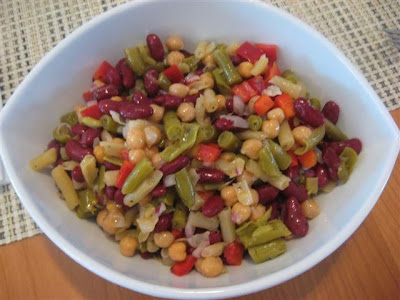
(Red Kidney, Green, and Yellow Beans - Phaseolus vulgaris and Chickpeas - Cicer arietinum)
9. Lisa of Lisa’s Kitchen
London, Ontario, Canada

Spicy White Bean and Turnip Soup
(Cannellini Beans - Phaseolus vulgaris)
10. Lavi of Home Cook’s Recipes
India
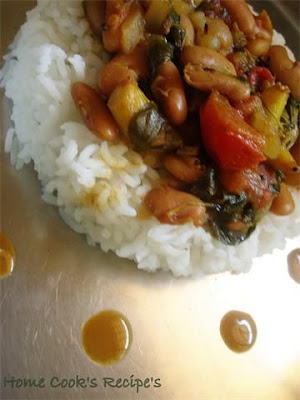
Amaranth Greens and White Kidney Bean Curry (Sirukeeri Rajma Curry)
(Cannellini Beans - Phaseolus vulgaris)
11. Swarna of Saivam
Fremont, California, United States

Portabella Mushrooms Stuffed with Cannellini Beans
(Cannellini Beans - Phaseolus vulgaris)
12. Allison of Local Lemons
Berkeley, California, United States

Spring Cannellini Bean Soup with Romano Croutons
(Cannellini Beans - Phaseolus vulgaris)
13. Lori of Taste with the Eyes
San Pedro, California, United States

Cannellini Bean Asian Slaw with Miso Sesame Dressing
(Cannellini Beans - Phaseolus vulgaris)
14. Erin of You-Name-It-Free
Basel, Switzerland
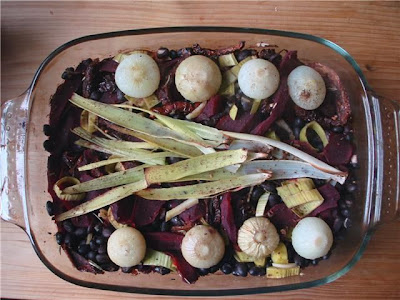
Royal Purple Baked Beans
(Black Beans - Phaseolus vulgaris)
15. Tigerfish of Teczcape-An Escape to Food
Singapore and California, United States
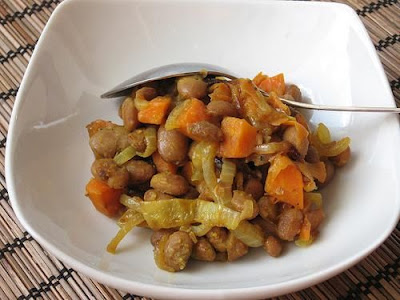
Spicy Pinto Beans
(Pinto Beans - Phaseolus vulgaris)
16. Katie of Eat This.
Haslett, Michigan, United States

Andean Pinto Bean and Butternut Squash Soup
(Pinto Beans - Phaseolus vulgaris)
17. Giff of The Constables’ Larder
New York, United States

Pancetta, Chard, Cranberry Bean and Gouda Gratin
(Cranberry Beans - Phaseolus vulgaris)
18. Manju of Mirch Masala
Seattle, Washington, United States

Barley and Mixed Bean Soup
(Beans - Phaseolus vulgaris)
Limas and the Lesser Phaseoli: Andes
After P. vulgaris (see above), the most important of the 55 separate Phaseolus species is the lima bean, Phaseolus lunatus. Albala says at 191-93 that the lima “is native to the Andes. Those found at the Guitarrero Cave in the highlands of Peru were domesticated even before both the common bean and corn. … They are roughly contemporary with many Old World sites of bean domestication. … Like P. vulgaris, the lima bean was taken to Europe sometime in the 16th century, and also to the Philippines with the Manila galleons. It is widely grown throughout SE Asia, particularly in Burma. It was also taken to Africa from Brazil, and is now the primary dried bean eaten in the tropics there and in Madagascar. … It never really caught on as a major food in Europe, probably because the climate is not ideal for its growth.”
1. Laurie of Mediterranean Cooking in Alaska
Anchorage, Alaska

Pan-Fried Salmon with Curly Endive and Christmas Lima Beans & Christmas Lima Bean Salad
(Lima Beans – Phaseolus Lunatus)
2. Susan of The Well-Seasoned Cook
New York, United States

Lima Bean and Artichoke Soup
(Lima Beans – Phaseolus Lunatus)
Tepary Beans: Native Americans
I tried tepary beans for the first time this month, because I wanted to have at least one recipe for each of Albala’s 11 bean chapters. Having done so, it’s hard to understand why it isn’t more widely available; it’s one of the best beans I’ve ever tasted. Albala explains at 203-04 that the origins of the tepary bean, Phaseolus acutifolius, “are debated since wild forms are found stretching from the Southwest through Central America. Archaeological remains in Puebla, Mexico, date back 5,000 years, but it is not known where it was first domesticated. A strong claim is made for domestication, perhaps independently, in the [American] Southwest where wild varieties can still be found. … As recently as the 1930s, the Tohono O’odham [formerly called Papago Indians] grew 1.5 million pounds of teparies a year. Half a century later the bean had almost completely disappeared.”
Laurie of Mediterranean Cooking in Alaska
Anchorage, Alaska, United States
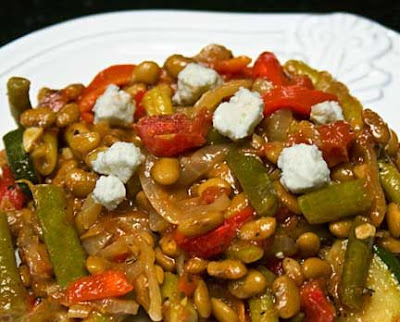
Tepary Bean and Vegetable Stew
(Tepary Bean – Phaseolus acutifolius)
Soy: China, Japan and the World
Soy is “the most widely grown bean on the plant,” according to Albala at 209, though most of it is processed “into milk and curd and made into a variety of condiments bearing little resemblance to the humble bean.” Albala attributes this to soybean’s slight bitterness and its “unpleasant beany odor” (noting that green Japanese edamames are “a very specific cultivar bred for its mild flavor and consumed immature”). “Glycine max is the Latin name for the soybean, which was descended from another wild bean, Glycine soja. … [It] was first cultivated in the eastern half of Northern China, based on recent DNA evidence, … about 3,000 years ago, though some make a claim for Mongolia. That makes it a relative latecomer among the ancient beans, but with an extremely long pedigree nonetheless. … Although archaeological evidence may eventually push back the origin of soy domestication, 1100 BCE is for the moment the earliest certain date.” Albala 209-10.
1. Laurie of Mediterranean Cooking in Alaska
Anchorage, Alaska, United States
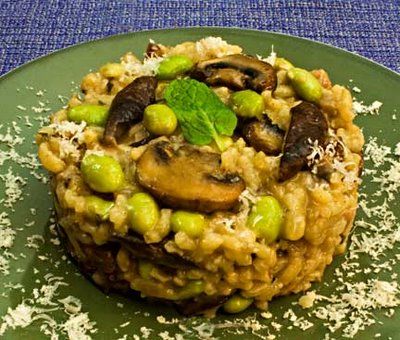
Mushroom and Edamame Risotto with Homemade Pancetta
(Soybeans – Glycine Max)
2. Soma of eCurry
Texas, United States

Stir Fried Ginger Tofu and Veggies with Brown Rice
(Soybeans – Glycine Max)
3. Christine of Kit’s Chow
Kitsilano, British Columbia, Canada

Savory Tofu Puffs
(Soybeans – Glycine Max)
~~~~~~~~~~~~~~~~~~~~~~~~~~~~~
Posted by
Laurie Constantino
at
11:54 AM
31
comments
![]()
Labels: beans





